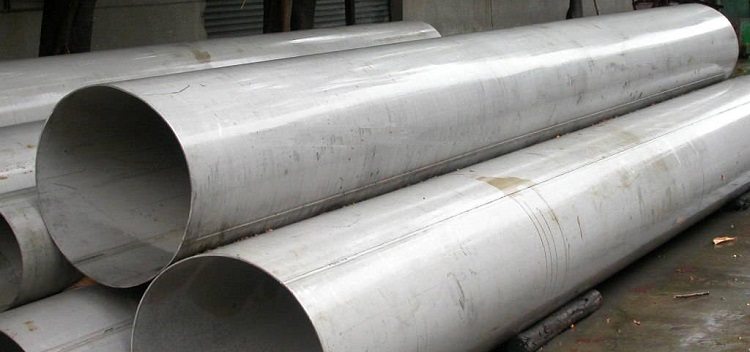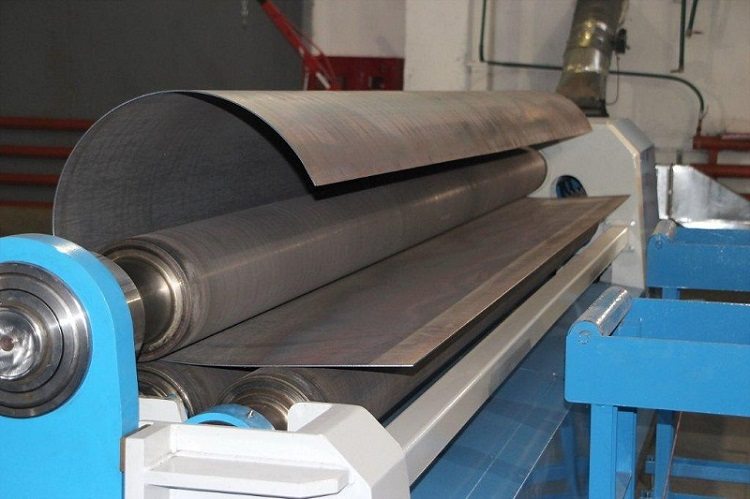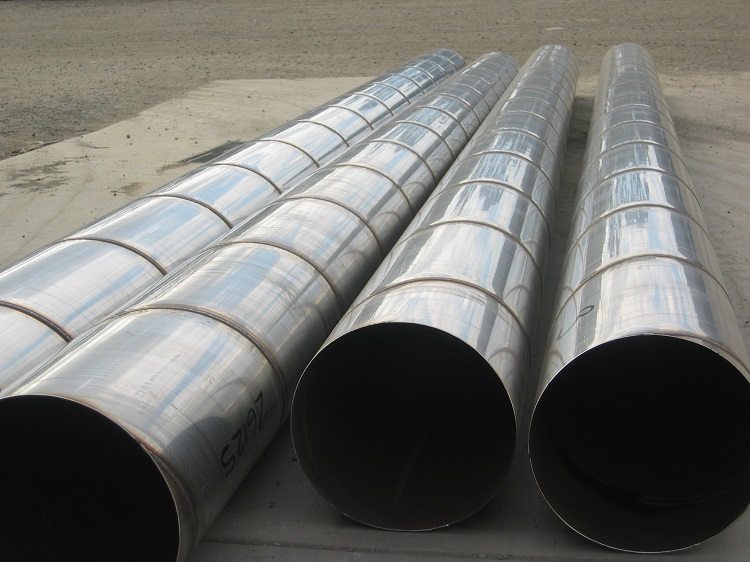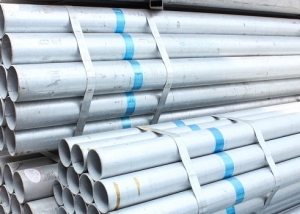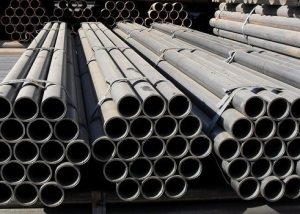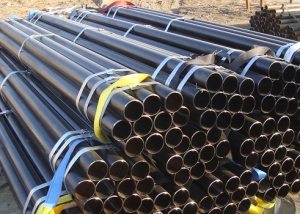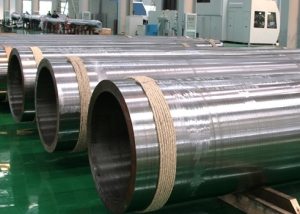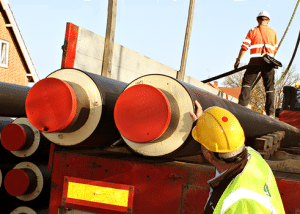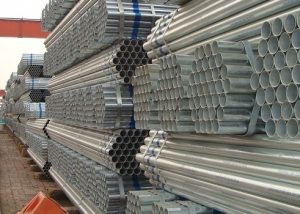GOST 11068-81 - stainless electric-welded pipes - a popular product in the market of sanitary equipment. It is used in the sectors of heavy and light industry, as well as in the national economy. Despite the competition from polymer pipes, this product is relevant due to many advantages. However, is it worth it to use for your own purposes and how to choose high-quality material? To answer this question, familiarize yourself with its main features.
Content
Main characteristics
Stainless steel electrowelded pipes produced in accordance with GOST 110 68-81 are a traditional raw material for heating and plumbing systems, they remain popular, despite the fact that relatively recently come into use polymer parts make up very tangible competition for them.
Of course, plastic pipes win in many respects, having lighter weight, compactness, flexibility and low price. But there are times when strong and reliable steel is simply irreplaceable.
To understand whether a stainless pipe is suitable (GOST 110 68-81) for one or another purpose, it is better to familiarize yourself with its main characteristics and features. In addition, to make the right choice when buying, you should study the principles and methods of production, as well as the rules of installation and operation.
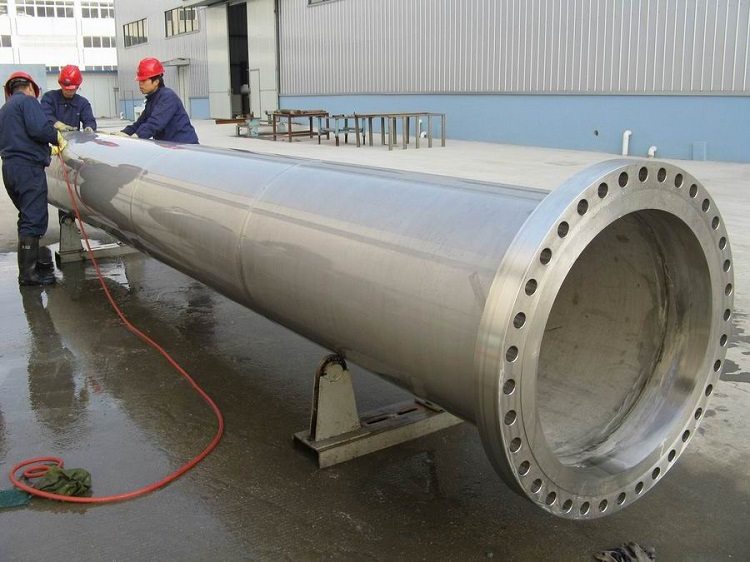
Such quality of steel pipes as high strength, in many cases it is impossible to replace even with the most modern polymers
The advantages of steel pipes
The popularity of steel pipes is due to the large number of advantages that they have.
Among them:
- strength. The dense and rigid structure of the material makes it especially durable, resistant to external factors and more wear resistant;
- resistance to mechanical damage. Thanks to the same structure, stainless steel pipes welded according to GOST 110 68-81, mechanical damage is not terrible - they are solid and strong, which makes it possible to install them in an open way;
- immunity to the negative effects of ultraviolet radiation. This is perhaps one of the main advantages of steel equipment compared to polymer. If a plastic pipe can be laid only in a dark room or underground, in a concrete wall, behind a plasterboard partition, then steel is not afraid of sunlight. The influence of ultraviolet radiation does not have the slightest negative effect on its operational characteristics;
- resistance to chemically and biologically active substances and corrosion;
- low level of linear expansion. This allows the use of stainless pipes (GOST 110 68-81) for heating systems and appliances. If in the case of polymer analogues, the pipe deforms and expands under the influence of high temperatures, which leads to the destruction of thin partitions, layers of drywall or plaster, damage to the wall coating and other troubles, then steel pipes are not afraid of heat. They can even be laid on the wall without using any extra insulation material;
- ability to work with hot environments. This ability is due to the high melting point of steel - due to this property, hot water inside the pipes does not pose a danger to the walls in the form of destruction or deformation.
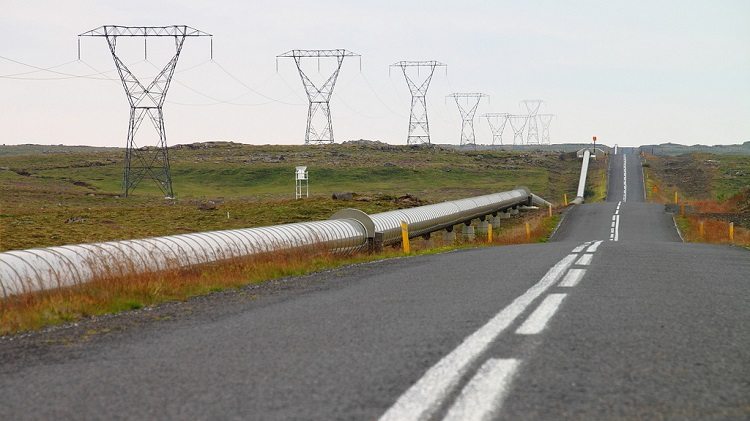
Resistance to damage, ultraviolet and high temperatures allow the use of steel pipes for laying pipelines in the open
Cons of metal pipes
Although the pipe has a sufficient number of useful properties, like any product on the market, it also has certain disadvantages. Namely:
- fragility. If we compare steel with polymers, then the life of the first is 2-3 times less. If a plastic pipeline can last fifty years or more, then an iron pipeline can last about 20 years. Of course, you can significantly extend its service life, but servicing equipment will require more money and effort from you than caring for polymer pipes;
- heavy weight. This disadvantage turns into inconvenience when working with material, since it is difficult to lift and move. This property of such products will also turn out to you to be a greater expense of finance and time for transportation than would be required for the delivery of polymer analogues;
- complicated installation. Having a higher melting point, GOST 110 68-81 stainless electric welded pipes during installation require the use of more powerful and expensive equipment. In addition, installing them yourself is extremely difficult, since the pipes themselves are heavy, difficult to bend and cut.
Although stainless pipes according to GOST 110 68-81 are made of corrosion-resistant steel - a material not subject to the development of destructive processes, they still have weak points - welded joints.
Important! To protect the equipment from such unpleasant problems, if your pipes are not made of stainless steel, use paint, special protective coatings and dusting.
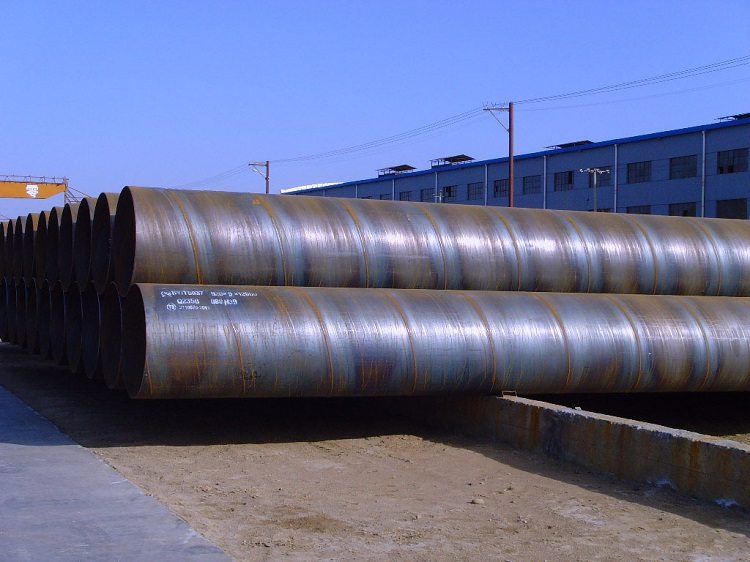
Welds are those places on the welded pipes that can be exposed to corrosion, despite the fact that the base of the products is stainless steel
Production process
In order to better understand the quality of the product during its selection and purchase, it will be useful to familiarize yourself with the main stages of production, because it is during this process that all the technical parameters of the product are formed, as well as quality control is met with all necessary standards.
It is worth knowing that electric welded pipes can be of two types - straight-seam and spiral-seam.
So, the production of stainless electrowelded (GOST 110 68-81 pipes) begins with the transportation and supply of steel sheets from the warehouse to the conveyor. This takes place through movable rollers and rollers.
After that, the sheets are milled to exclude sections with rust and scale in the composition of the pipes. Then they attach special strips - pieces of steel, with which the possibility of manufacturing defective products with curved seams is excluded.
When welding, the machine needs a certain amount of time to “warm up”, when the seams can be uneven. As a consequence, these trims are easy to clean.
The next procedure is bending corners. The main molding mill cannot bend from an absolutely obtuse angle. Therefore, the edges of the sheets are slightly bent to the level at which they will be accessible to the machine.
Now the workpieces are forming, and then welded. Welding takes place in several stages: the first is technical, during which a rough preliminary seam is made, and the second is the boiling of the seam section outside and inside the pipe. After that, the workpieces are cooled and ground. And finally, the final stage is testing with ultrasound and water.
Technical specifications
Electric welded pipes are used in many sectors of heavy industry, in mechanical engineering, as well as in the construction, repair and installation of communication systems (water supply and heating). It is very important that such products function properly and last as long as possible, therefore there is tight control over the quality of such products.
Good to know! All types of electric-welded pipes are manufactured according to state quality standards.These standards govern almost all product parameters: nominal weight, pipe length and wall thickness, as well as chemical and mechanical properties.
Dimensions must strictly comply with the requirements of the standard. The parameters are presented in the table.
Table 1
| Outer
diameter mm |
Wall thickness | |||||||||||||
| 0,8 | 1,0 | 1,2 | 1,4 | 1,5 | 1,8 | 2,0 | 2,2 | 2,5 | (2,8) | 3,0 | (3,2) | 3,5 | 4,0 | |
| 8 | + | + | + | — | — | — | — | — | — | — | — | — | — | — |
| 9 | + | + | + | — | — | — | — | — | — | — | — | — | — | — |
| 10 | + | + | + | — | — | — | — | — | — | — | — | — | — | — |
| 11 | — | + | + | + | + | + | — | — | — | — | — | — | — | — |
| 12 | + | + | + | + | + | + | + | — | — | — | — | — | — | — |
| 14 | + | + | + | + | + | + | — | — | — | — | — | — | — | — |
| 15 | — | + | + | + | + | + | — | — | — | — | — | — | — | — |
| 16 | + | + | + | + | + | + | + | + | — | — | — | — | — | — |
| (17) | — | + | + | + | + | + | + | + | — | — | — | — | — | — |
| 18 | — | + | + | + | + | + | + | + | — | — | — | — | — | — |
| (19) | — | + | + | + | + | + | + | + | — | — | — | — | — | — |
| 20 | — | + | + | + | + | + | + | + | — | — | — | — | — | — |
| 22 | — | + | + | + | + | + | + | + | — | — | — | — | — | — |
| 25 | — | + | + | + | + | + | + | + | + | — | — | — | — | — |
| 28 | — | — | + | + | + | + | + | + | + | — | — | — | — | — |
| 30 | — | — | + | + | + | + | + | + | + | — | — | — | — | — |
| 32 | — | — | + | + | + | + | + | + | + | + | + | + | — | — |
| 33 | — | — | + | + | + | + | + | + | + | + | + | + | — | — |
| 34 | — | — | + | + | + | + | + | + | + | + | + | + | — | — |
| 35 | — | — | + | + | + | + | + | + | + | + | + | + | — | — |
| 36 | — | — | + | + | + | + | + | + | + | + | + | + | — | — |
| 38 | — | — | + | + | + | + | + | + | + | + | + | + | — | — |
| 40 | — | — | + | + | + | + | + | + | + | + | + | + | — | — |
| 42 | — | — | + | + | + | + | + | + | + | + | + | + | — | — |
| 43 | — | — | + | + | + | + | + | + | + | + | + | + | — | — |
| 45 | — | — | + | + | + | + | + | + | + | + | + | + | — | — |
| 48 | — | — | — | + | + | + | + | + | + | + | + | + | — | — |
| 50 | — | — | — | + | + | + | + | + | + | + | + | + | — | — |
| 51 | — | — | — | + | + | + | + | + | + | + | + | + | — | — |
| 53 | — | — | — | + | + | + | + | + | + | + | + | + | — | — |
| 55 | — | — | — | + | + | + | + | + | + | + | + | + | — | — |
| 56 | — | — | — | + | + | + | + | + | + | + | + | + | — | — |
| 57 | — | — | — | + | + | + | + | + | + | + | + | + | — | — |
| 60 | — | — | — | + | + | + | + | + | + | + | + | + | — | — |
| 63 | — | — | — | + | + | + | + | + | + | + | + | + | — | — |
| 65 | — | — | — | + | + | + | + | + | + | + | + | + | + | + |
| 70 | — | — | — | + | + | + | + | + | + | + | + | + | + | + |
| 76 | — | — | — | + | + | + | + | + | + | + | + | + | + | + |
| 83 | — | — | — | — | — | + | + | + | + | + | + | + | + | + |
| 89 | — | — | — | — | — | + | + | + | + | + | + | + | + | + |
| 102 | — | — | — | — | — | + | + | + | + | + | + | + | + | |
Note! The dimensions in brackets indicate that these pipes are not recommended when designing new facilities.
More about options
The first thing that characterizes pipes is their length. It is measured and unmeasured. What is the difference? Measured length pipes are standard-sized pieces sold by footage or weight. For electric-welded pipes, it should be 5–9 meters. Unmeasured length means that such pipes can be sold in any convenient length in the range from 1.5 to 9 meters.
In addition to these two main varieties, GOST assumes the release of multiple measured products (up to 9 meters with an allowance of 5 mm for each multiple segment), measured with a remainder (up to 10% of the weight of products of unmeasured length), and also an unmeasured multiple length with a remainder (up to 10 % of the weight of pipes of measured length).
Deviations along the length of the measured and multiple for electric-welded pipes can be no more than +15 millimeters.
As for the theoretical mass, it is calculated using a special formula:
M = psng (Dn-sn) / 1000, where:
Dn is the apparent diameter of the product (nominal); Sn is the nominal wall thickness, measured in millimeters; g is the density of the material, depending on the steel grade and measured in grams per cubic centimeter.
Weight depends on steel grade:
- for steel grades 08Х18 Н10Т, 10Х18 Н10Т, 12Х18 Н10Т, 03Х18 Н10Т, 08Х18 Н10 it should be equal to 7.9 g / cm3;
- for grades 08X21 H6 M2T, the density will be 7.85 g / cm3;
- pipes from steel grades 10Х17 Н13 М2Т, 10Х17 Н13 М3Т, 03Х17 Н113 М2Т, 03Х17 Н14 M3 will have 8 g / cm3 of density;
- steel products 08Х22 Н6Т - 7.6 g / cm3; 06XH28 MDT - 7.95 g / cm3; 04X17 T, 08X18 T1 should have a density of 7.72 g / cm3.
Chemical parameters of pipes are also a very important criterion. It depends on them whether it is possible to use equipment, because not all types of pipes are able to withstand, for example, work with aggressive media and chemicals. Therefore, such characteristics for pipes made of steel grades 10X18 H10T and 04X17 T are regulated by GOST 110 68 81 standards. Mechanical properties are also regulated by this GOST, according to which pipes made of steel grades 08X18 H10T, 10X18 N10T, 12X18 N10T, 04X17 T are made using heat treatment.
And for grades 08Х18 Н 10Т, 08Х18 Т1, 08Х18 Н10, 12Х18 Н10 Т, 10Х17 Н13 М2Т, 10Х17 Н13 М3Т, 08Х22 Н6Т, 08Х21 Н6 М2Т, 06ХН28 МДТ, 08Х17 Н13 М2Т, 03Х17 Н14 M3, 03Х18 Н32Т, standard number 56 exists their chemical composition.
The use of steel pipes is justified in the construction of the most diverse objects of domestic and industrial use. The assortment of these products is quite wide, and it is not difficult to choose the right product. The main thing is to choose the products of those enterprises that guarantee the quality of their pipes and their full compliance with accepted standards.
